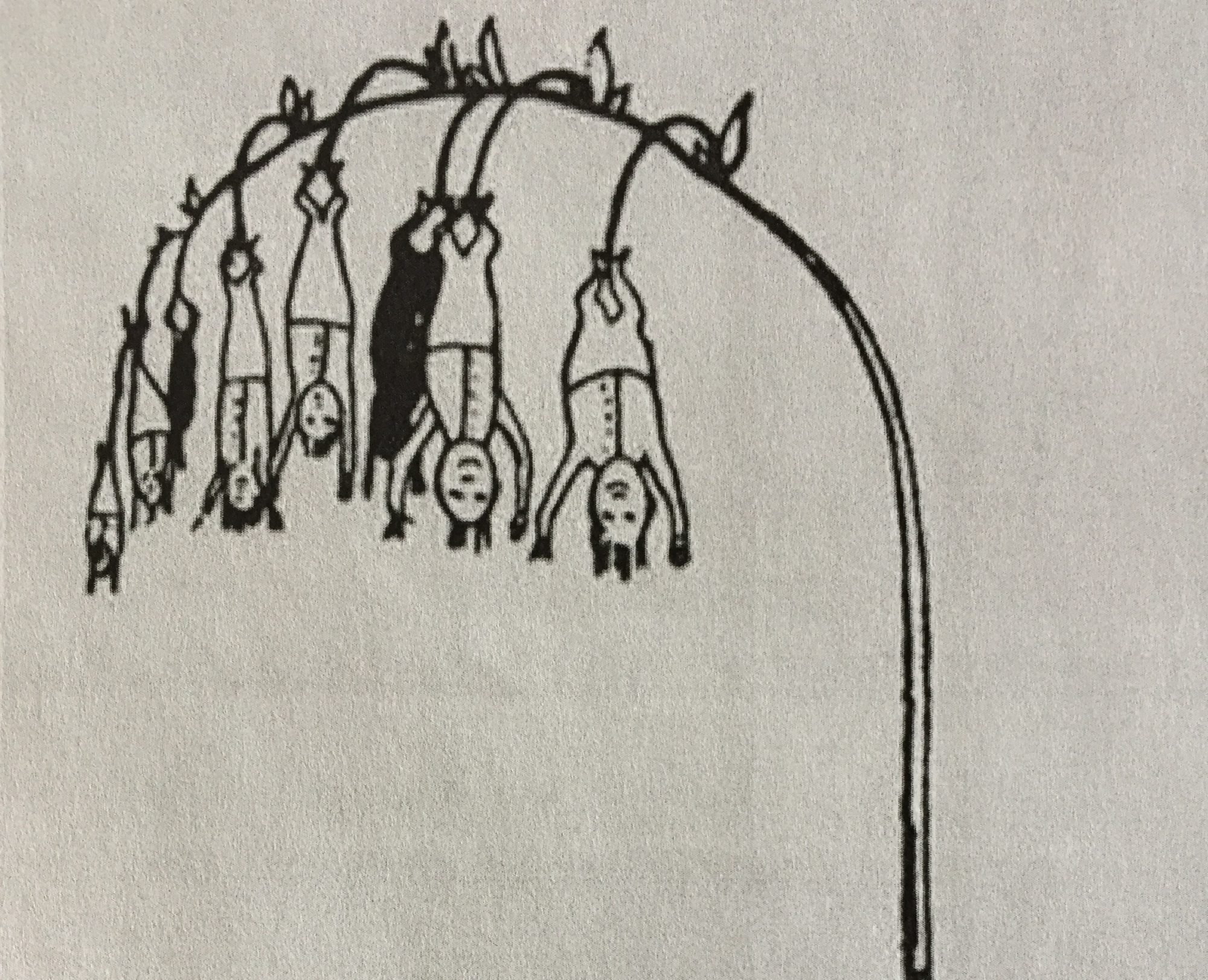
Welcome to the decennial edition of Recennial Quackisitionals, wherein we shall dive into the oddness, blobness, and thrice-bouncingity of Dale’s Bits, the series of animated videos by Dale Crosby-Close that burbles frequently into nonsensical nirvana. I had been planning on writing about this for some time but somehow had not found the gumption, my couch cushion crevices being stocked most recently only with grumption, on account of visions of impending idiocracy, not to mention the torturous process of bookcraft concerning our new edition of Alan Watts’ Nonsense. But more on that in the near future, wethinks. Today, I was positively provoked into inducting Dale’s Bits into the Gromboolia Anthology of Nonsense, with the bit titled, “Family boy.” Within the ostensible framework of the series “Family Guy,” the video is what I might call a nonsense parody, wherein the nonsense deflects any direct parodical parochialism and becomes something else entirely, its own gimbled gallimaufry. All of this is handilly-down-dandy, and well worthy of inclusion in the Anthology, but the provocation came in the form of this bit’s non-sequitorial detour into “Jabberwocky,” further enjambling this into nonsense canon. The whole run of videos, however, is deeply nonsensical. Some of the bits that fit best into the nonsense genre star Dean, a monkish, delightfully contrarian fellow with a crooked head and a hankering for sausages, sometimes ambient sausage rolls (these, I have learned, are not some kind of meaty electronica but rather are (or were) real. Around 2010 (yes, sometimes one can trust Dean), the Co-op grocery chain, in the UK, sold them—that is, room temperature sausage rolls. Scrod knows why that practice was discarded). Sometimes Dean delves into scents and perskins. Occasionally, as is inevitable, a whole hour is devoted to Matt Damon. Yes, you read that right. One day, other lump-headed Deans around the Deanship will be writing dissertations on this stuff.

Crosby-Close lives in England and has created work for a host of publications, including The New York Times, The Boston Globe, and CNN. Here’s a good recent article on him. We have some doubts as to his being, as he claims, a “general human being.”
Check out more in: THE GROMBOOLIA ANTHOLOGY OF NONSENSE













